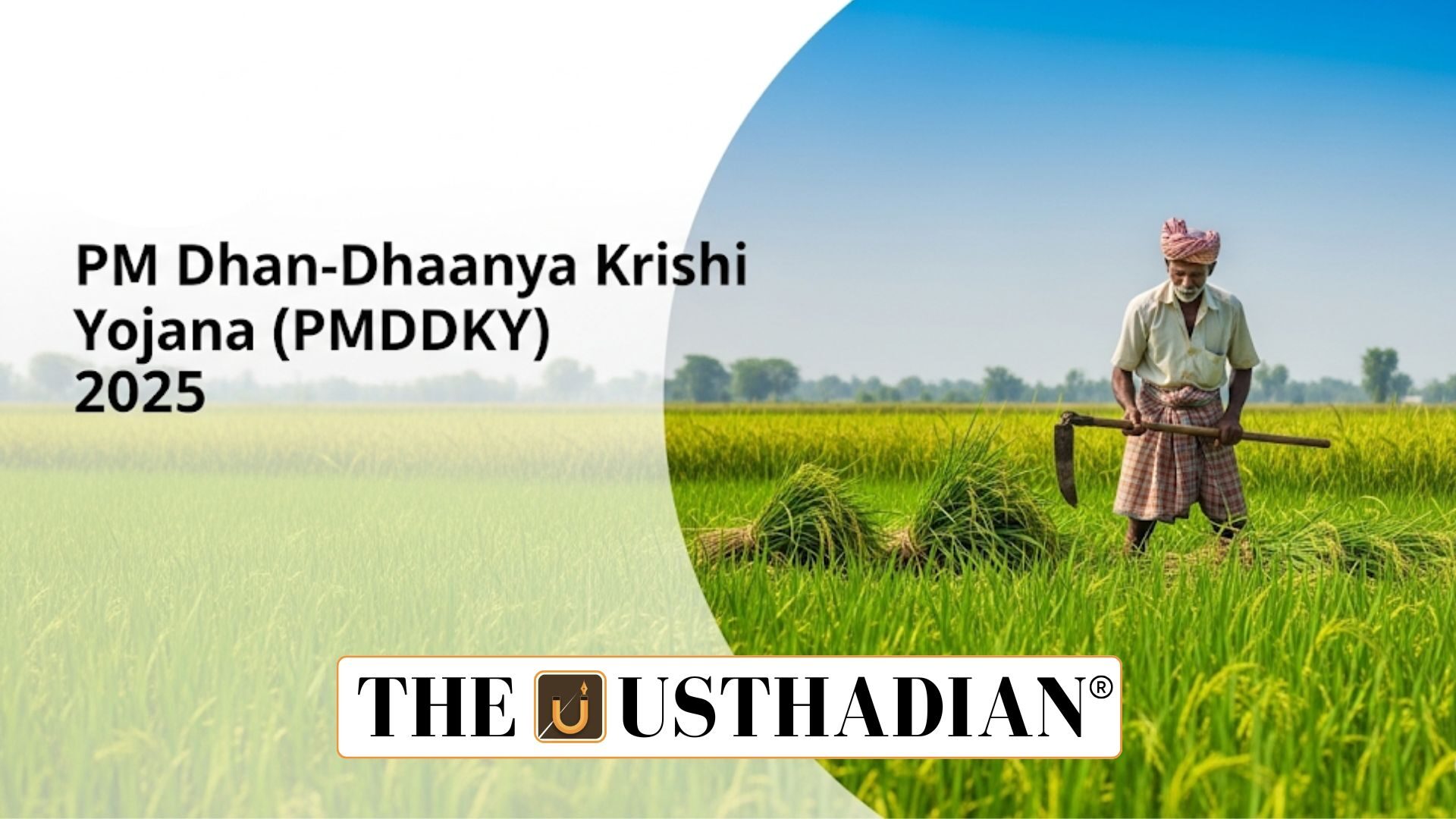Introduction
PM Dhan Dhaanya Krishi Yojana Revision Note: On 16 July 2025, the Union Cabinet approved the Prime Minister Dhan‑Dhaanya Krishi Yojana (PM‑DDKY).
The scheme is scheduled for six years, starting 2025–26, with an annual outlay of ₹24,000 crore.
It targets 100 agriculturally lagging districts to boost productivity and farmer welfare.
Static GK fact: India is the world’s largest producer of milk, and agriculture employs ~58% of the population.
Objectives
The chosen goal is to enhance agricultural productivity, expand irrigation, increase storage capacity, and improve credit flow.
It also prioritizes crop diversification, rural employment, and food security.
These objectives align with national priorities like doubling farmers’ income and rural development.
Background
PM‑DDKY builds upon the Aspirational Districts Programme, which focuses on districts underperforming in key development sectors.
Many regions still face low cropping intensity, inadequate tech access, and poor financial inclusion.
The new scheme addresses these gaps through concerted central-state action.
Static GK Tip: India’s Green Revolution (1960s–70s) dramatically increased foodgrain production using modern techniques.
Coverage and Selection
The 100 districts are selected based on benchmarks such as low productivity, cropping intensity, and credit flow.
Each state gets at least one district, with additional ones allocated based on net cropped area and land holdings.
This ensures a balanced geographic spread across agro-climatic zones.
Institutional Setup
Implementation is structured through coordination among 36 schemes across 11 ministries.
Key roles include:
- District Agriculture and Allied Activities Plan, crafted by the local DDKY Samiti under the District Collector.
- Monitoring through a dashboard tracking 117 performance indicators, with monthly reviews.
- Strategic guidance provided by NITI Aayog.
Static GK fact: India has 77 agriculture universities supporting research and outreach.
Each district will collaborate with a technical partner, such as a Central/State Agriculture University or recognised R&D institution.
Funding and Implementation
The scheme allocates ₹24,000 crore per year, totaling around ₹1.44 lakh crore over its span.
The budget will finance infrastructure projects, farmer training, irrigation systems, storage facilities, and credit access mechanisms.
It encourages public-private partnerships to ensure modern technology and efficient service delivery.
Expected Impact
PM‑DDKY is expected to directly benefit 1.7 crore farmers across targeted districts.
It will help reduce regional disparities in agricultural output and infrastructure.
By promoting value-added agriculture, it supports higher income and enhanced self‑reliance.
Static GK fact: India ranks as the second largest producer of wheat and rice globally.
Monitoring and Evaluation
District progress will be tracked across 117 indicators via real-time dashboards.
Regular reviews at the national, state, and district levels will ensure accountability.
NITI Aayog’s oversight will help course‑correct implementation strategies where needed.
Conclusion
PM‑DDKY represents a major step towards holistic agricultural transformation in underperforming districts.
With strong institutional frameworks, robust funding, and policy convergence, the scheme supports India’s goals for rural sustainability, farmer prosperity, and national food security.
Static Usthadian Current Affairs Table
PM Dhan Dhaanya Krishi Yojana Revision Note:
| Fact | Detail |
| Scheme Name | Prime Minister Dhan‑Dhaanya Krishi Yojana |
| Approval Date | 16 July 2025 |
| Duration | 2025–26 to 2030–31 |
| Annual Budget | ₹24,000 crore |
| Total Budget (6 years) | ₹1.44 lakh crore |
| Target Districts | 100 agriculturally lagging districts |
| Beneficiaries | Approx. 1.7 crore farmers |
| Monitoring Mechanism | 117 indicators dashboard, NITI Aayog oversight |
| Scheme Coverage | Irrigation, storage, credit, diversification |
| Institutional Structure | DDKY Samiti, technical partners, multi‑minister convergence |








